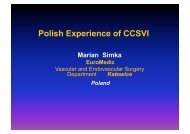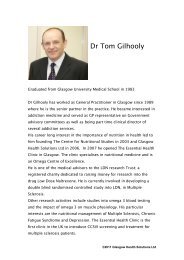ISNVD Abstract Book
ISNVD Abstract Book
ISNVD Abstract Book
Create successful ePaper yourself
Turn your PDF publications into a flip-book with our unique Google optimized e-Paper software.
Bruxism and Temporal Bone Hypermobility in Patients with Multiple Sclerosis<br />
David E. Williams<br />
Introduction:<br />
Many of the disease elements of MS are similar to those of long term cranial trauma. Anatomical observations by the principle author have suggested<br />
that one possible source of trauma could be instigated by bruxism via cranial suture insufficiency. In this study, the authors investigated the link between<br />
jaw clenching/bruxism and temporal bone movement associated with multiple sclerosis (MS).<br />
Materials and Methods:<br />
Twenty-one subjects participated in this study (10 patients with MS and 11 controls). To quantify the change in intracranial<br />
dimension between the endocranial surfaces of the temporal bones during jaw clenching, an ultrasonic pulsed phase locked loop (PPLL) device was<br />
used. A sustained jaw clenching force of 100 lbs was used to measure the mean change in acoustic pathlength (_L) as the measure of intracranial<br />
distance.<br />
Results:<br />
In the control subjects the mean _L was 0.27 mm±0.24. In ubjects with MS the mean _L was 1.71 mm±1.18 (p




